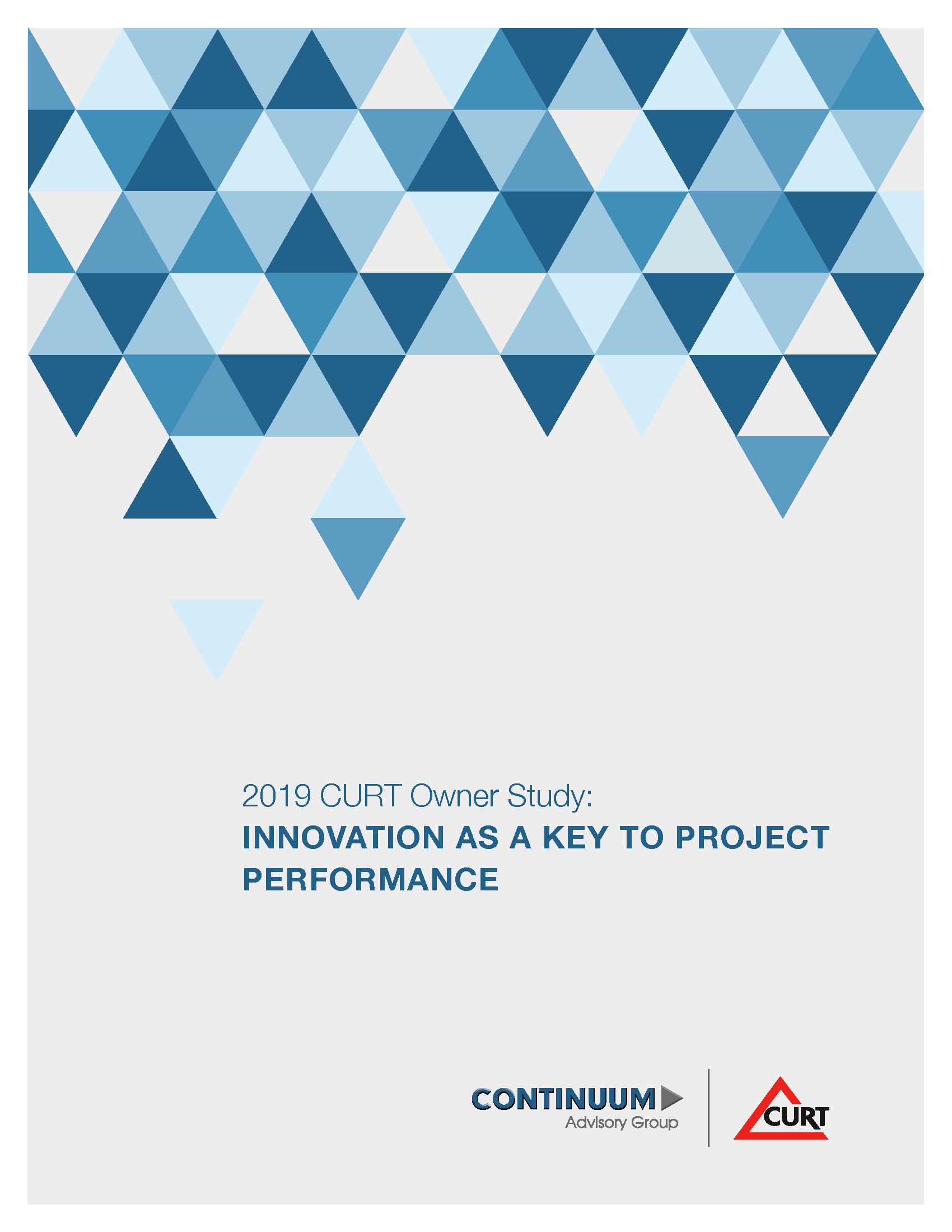Innovation is a term on the brink of overuse. It is used to describe major…
2017 CURT Owners Study: Owner/Contractor Relationships
This year’s CURT (Construction Users Roundtable) conference was centered around a simple idea: excellence in total project performance. But like any great idea, the steps to bring it to life can be far from simple.
Our annual owners study seeks to outline those steps and figure out how great owners have already made progress. This year’s study explores the key ingredients of project excellence and how to bring it to life.
In our last installment, we looked internally at lean processes and tools. Lean and similar methodologies have a definite impact on your scheduling and budget, but you shouldn’t ignore external factors! That’s why today we’re looking at the ever-important owner-contractor relationship.
What Makes a Good Owner-Contractor Relationship?
To get the full picture, we asked the same question to both A/E/C and owner teams: what sets high excellence owners or A/E/C partners apart?
The results are similar, with the most-desired attributes centering around communication. Both sides want transparency, which streamlines problem solving and mitigates cost overruns. That further contributes to an atmosphere of trust, which helps eliminate micromanagement and other hurdles that lower morale and stymie innovation.
That idea of communication births long-term, fruitful partnerships. Owners, in particular, expressed the desire for long-term relationships with contractors they can depend on. Contractors also desire less transactional relationships, preferring to be seen as part of a team.
The Millenial Perspective
In Fall 2016, a workshop at the CURT Young Professionals Summit asked similar questions. The results showed a great deal of overlap between the mindset of the next generation of construction and our 2017 findings.
- Protect Each Other: there’s a win-win spirit in a good owner/contractor relationship, one where both businesses help each other. Contractors can act as “trusted advisors” for owners.
- Clear Communication: especially relevant given our 2017 findings, young professionals want openness. For contractors, this means letting owners know early of planning changes; for owners, it means giving contractors an explanation for losing RFPs. A major theme was to stop “sandbagging,” or not putting one’s full capabilities forward.
- Clear Expectations: for contractors, this means that owners need to be willing to hear feedback on any unrealistic expectations for a project. Such misunderstandings can cause huge delays, balloon budgets, and sour owner/contractor relationships.
- Pre-Planning: the big issue here is time. Owners and contractors both want more upfront time to get on the same page. This arguably helps with items 2 and 3, as it deliberately carves out time to set expectations and goals.
You can read the full study here.


